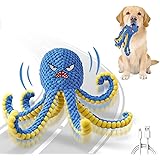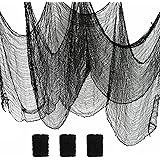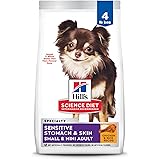Embarking on a fitness journey, especially from the comfort of your home, offers incredible flexibility and autonomy. However, many women often face similar challenges: how to effectively target stubborn areas like the hips, thighs, and lower belly, while staying motivated amidst daily distractions. The vibrant, motivational energy from the track accompanying the video above serves as a powerful reminder that achieving these goals isn’t just about the physical exercises; it is fundamentally about cultivating an unyielding mindset.
Instead of letting self-doubt or external pressures dictate your progress, embracing a resilient “I won’t give up” attitude is crucial. This comprehensive guide will illuminate the path to sculpting a stronger lower body and a more defined core, providing actionable strategies you can implement right away. We will explore effective lower body workout routines, focused hips and thigh exercise techniques, and smart approaches to addressing lower belly fat workout goals, all designed for women training at home.
Unleashing Your Inner Strength: The Mindset for Home Workouts
The journey to significant fitness results invariably begins in the mind. The powerful lyrics “don’t ever let them get inside your head” and “treat the worst of times just like a test” resonate deeply with the psychological battle many face. Establishing a consistent at-home workout routine demands significant mental fortitude and unwavering self-belief.
Frequently, the biggest obstacles are not physical limitations but internal doubts or the temptation to procrastinate. However, by adopting a mindset of relentless perseverance, you transform every challenge into an opportunity for growth. Approach each workout session as a deliberate step towards your ultimate physical and mental prime, remembering the importance of finding your limits and always pushing yourself.
Sculpting Your Lower Body: Effective Hips and Thigh Exercises at Home
To truly build strength and tone in your hips and thighs, a combination of compound movements and isolation exercises is essential. These movements engage multiple muscle groups simultaneously, maximizing efficiency and calorie expenditure. Focusing on proper form over speed will yield far better and safer results in the long run.
Despite popular belief, you do not need heavy equipment to challenge these powerful muscle groups effectively. Bodyweight exercises, when performed correctly and progressively, can create substantial muscle stimulus. Consistency in your hips and thigh exercise routine is undoubtedly the key to seeing visible transformations.
Dynamic Moves for Powerful Hips and Thighs
Incorporating a variety of movements ensures that all parts of your lower body receive adequate attention. Consider integrating these core exercises into your routine for comprehensive development. Performing each exercise with controlled movements amplifies muscle activation, leading to more targeted results.
- Squats (Bodyweight, Sumo, Goblet): The classic squat is a fundamental lower body exercise, engaging glutes, quads, and hamstrings. A sumo squat targets inner thighs more intensely, while holding a household item (like a heavy book or water bottle) for a goblet squat adds progressive resistance. Always keep your chest up and drive through your heels for optimal engagement.
- Lunges (Forward, Reverse, Lateral): Lunges are exceptional for building unilateral leg strength and stability, crucial for athletic performance and daily functional movement. Forward and reverse lunges primarily target the quads and glutes, whereas lateral lunges effectively engage the inner and outer thighs. Maintain balance and ensure your front knee tracks over your ankle.
- Glute Bridges/Hip Thrusts: These exercises are superb for directly activating the gluteal muscles, helping to build stronger, more defined glutes and improving hip extension. Perform glute bridges by lying on your back with bent knees, then lifting your hips towards the ceiling. For hip thrusts, elevate your upper back on a couch or chair for increased range of motion and intensity.
- Romanian Deadlifts (RDLs) with household items: While traditionally performed with barbells, RDLs can be adapted using dumbbells, water jugs, or even just bodyweight for excellent hamstring and glute activation. Focus on a hip hinge movement, keeping your back straight and a slight bend in your knees as you lower your torso. This movement effectively stretches and strengthens the posterior chain.
Tackling Lower Belly Fat: Beyond Just Crunches
When it comes to addressing lower belly fat workout goals, a common misconception is that endless crunches will miraculously melt fat away. However, the scientific consensus firmly states that “spot reduction” is a myth; you cannot selectively burn fat from one area of your body. Overall fat loss, primarily achieved through a consistent calorie deficit and a well-rounded fitness regimen, is the only proven method to reduce fat stores, including those in the lower abdomen.
Nevertheless, strengthening your core muscles is incredibly beneficial for several reasons. A strong core supports good posture, reduces back pain, and improves overall body mechanics, contributing to a more toned appearance once body fat levels decrease. Therefore, integrating effective core exercises into your routine, alongside your lower body workout, is a smart strategy.
Core-Strengthening Moves for a Strong Midsection
These exercises engage your entire core, not just the superficial abdominal muscles, promoting functional strength. Consistent practice will build endurance and power throughout your midsection. Remember to focus on controlled breathing and maintain a neutral spine during all movements for optimal safety and effectiveness.
- Planks (and variations): The plank is an isometric exercise that powerfully engages all core muscles, including the transversus abdominis, which acts like a natural corset. Start with a standard plank, then progress to side planks or plank jacks for added challenge. Hold for as long as you can maintain perfect form.
- Leg Raises: This exercise directly targets the lower abdominal muscles, often a tricky area to engage. Lie on your back, keep your lower back pressed into the floor, and slowly raise and lower your legs. Control the movement both upwards and downwards to maximize muscle tension.
- Bicycle Crunches: A dynamic core exercise that works the obliques and rectus abdominis while engaging hip flexors. Lie on your back, bring opposite elbow to opposite knee, simulating a pedaling motion. Focus on twisting from your core rather than just pulling with your neck.
- Russian Twists: Excellent for targeting the obliques, which are crucial for rotational stability and defining the sides of your waist. Sit with bent knees, lean back slightly (maintaining a straight back), and twist your torso from side to side. For increased resistance, hold a water bottle or a small weight.
Optimizing Your At-Home Routine for Maximum Results
An effective fitness plan extends beyond simply performing exercises; it encompasses consistency, progressive overload, and proper nutrition. Just as the song emphasizes, “I’m gonna make it to the top,” this involves a holistic commitment to your well-being. Focusing on these elements ensures you continuously challenge your body and support its recovery processes.
Building a sustainable routine that fits your lifestyle is far more impactful than sporadically intense sessions. Treat your fitness journey like a marathon, celebrating small victories along the way. Remember that transformation is a gradual process requiring patience and dedication, echoing the sentiment of “with a little time, just be patient, make a statement.”
Consistency is Your Closest Ally
Regularity trumps intensity when it comes to long-term results and building new habits. Aim for a structured workout schedule that you can realistically adhere to each week. Three to four lower body workout sessions, each lasting 30-45 minutes, are often sufficient for significant progress for women training at home.
Furthermore, continuously challenging your muscles is essential for growth. This principle, known as progressive overload, means gradually increasing the difficulty of your workouts. You can achieve this by performing more repetitions, adding extra sets, increasing the duration of holds, or decreasing rest times between sets. Even without weights, increasing the time under tension or introducing more complex bodyweight variations provides ample challenge.
Fueling Your Progress: Nutrition Matters
Your diet plays an indispensable role in shaping your body composition, directly impacting your ability to reduce body fat and build lean muscle. Without adequate nutritional support, even the most rigorous hips and thigh exercise routine will fall short of its potential. Prioritize whole, unprocessed foods that provide sustained energy and support muscle repair.
Ensure your meals include lean protein sources (chicken, fish, legumes), complex carbohydrates (oats, brown rice, sweet potatoes) for sustained energy, and healthy fats (avocado, nuts, olive oil) essential for hormone function and nutrient absorption. Drinking plenty of water is also crucial for metabolism, energy levels, and overall bodily function. Remember, a balanced diet complements your physical efforts beautifully.
Embracing the Journey: Never Give Up, Never Quit
The path to achieving your fitness aspirations, particularly targeting a stronger lower body and a flatter stomach, is rarely linear. There will be days when motivation wanes, and progress feels slow. The accompanying track’s refrain, “Never break, always fight, never quit,” offers a powerful mantra for these moments. View setbacks not as failures, but as integral parts of your learning and adaptation process.
Every rep, every sweat drop, and every decision to show up for your lower belly fat workout contributes to the stronger, more resilient person you are becoming. By consistently pushing your limits and refusing to be deterred by obstacles, you embody the very spirit of perseverance. Ultimately, this dedication helps you build a life “with meaning,” driven by discipline and a profound commitment to self-improvement.









